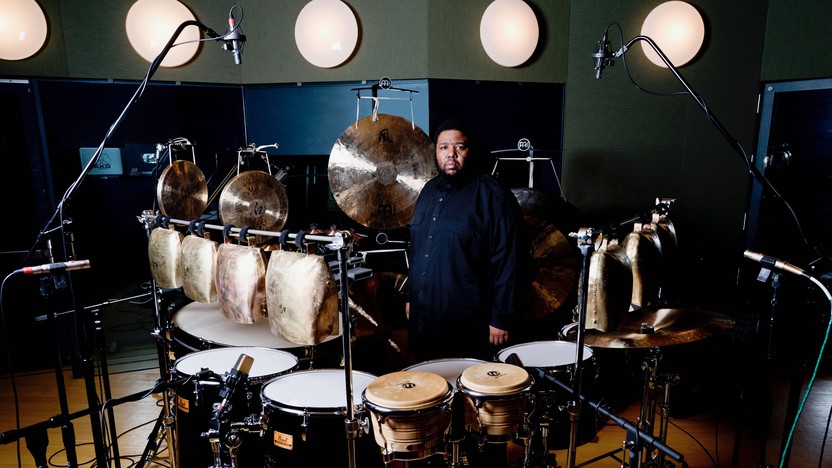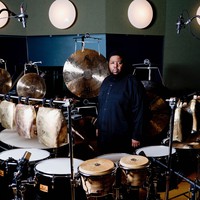Improvisations with Pekka Kuusisto and Tyshawn Sorey

Sponsored By
- January 11, 2019


Sponsored By


Ludwig van Beethoven arrived in Vienna in 1792 and made a splash as a keyboard virtuoso, but his reputation as a composer didn’t catch up until around 1800. One shrewd move he made that year was his dedication of the Septet (Opus 20) to the Empress Maria Theresa; she was impressed enough that she recommended him the next year for a high-profile ballet commission.
The ballet’s creator, Salvatore Viganò, was a famous dancer and choreographer visiting from Italy. As he wrote in the program book for the premiere at Vienna’s Burgtheater, he borrowed from the Greek myth of Prometheus, “a lofty soul who drove the people of his time from ignorance, refined them by means of science and the arts, and gave them manners, customs and morals.” According to his summary, “Two statues that have been brought to life are introduced in this ballet; and these, through the power of harmony, are made sensitive to all the passions of human life.”
The Overture to The Creatures of Prometheus leaps right in with a sense of forward motion generated by its unstable first chord — a harmonic trick that Beethoven recycled from his First Symphony, composed a year earlier. The restless, running themes of this spry overture recall Wolfgang Amadeus Mozart’s breathless overture to The Marriage of Figaro, showing how well Beethoven absorbed the lessons of his hero and Viennese predecessor.
Aaron Grad ©2025
I can’t tell you how to feel with this piece, but I can tell you how I felt while writing it, which is essentially how it feels to call oneself an American today: pulled apart, broken, anxious, untethered. My original impulse, for that reason, was to visit that same violence on the orchestra — to destroy it as a totality, and force the players into small, irregular, vulnerable aggregates instead. But I eventually abandoned this position, because it seemed to reproduce the same problem that traps us every day. If one way to respond to our era of disunity is to portray it accurately, perhaps another alternative is to imagine unity anew. So I chose to work against the titular fragmentation, and strive instead for synchronies of movement, sturdy resonances, structural accumulations and an ear toward pleasure.
I never trusted the kind of biographical musicology that attributes musical details to the composer’s real-life highs and lows — never, that is, until I started composing a lot of works myself, particularly those that I do not steer from the piano. If presence-in-the-present is my priority as a pianist, then as a composer I try to give sound to the full texture of the moment in which I write, the temporal vantage from which I get to “show up.” Composing becomes a kind of time capsule, a souvenir of whatever felt urgent yesterday. Still, it is meant to be inhabited by players and listeners in the present. My hope is that this piece might, at least for its duration, serve to unify the bodies in the room -- an experience that is hard to find today, and one that might stay with you until tomorrow.
Vijay Iyer ©2017

At the start of World War I, the 39-year-old Maurice Ravel volunteered as a truck and ambulance driver, forcing him to set aside Le tombeau de Couperin, a work-in-progress for solo piano honoring the French Baroque composer François Couperin. By the time Ravel finished the suite in 1917, it had acquired a more personal meaning, with each of the six movements dedicated to friends killed in the war.
Ravel transcribed four of the movements for chamber orchestra in 1919. Starting with the fluid melody of the Prélude, the oboe has an outsized role in the orchestration, echoing its prominence as a solo instrument in the Baroque era. Ravel dedicated this movement to Lieutenant Jacques Charlot (the godson of his music publisher), who died in battle in 1915.
The second movement, a Forlane, is based on a lively and flirtatious couple’s dance that entered the French court via northern Italy. Ravel sketched this movement before the war and subsequently dedicated it to the Basque painter Gabriel Deluc, who was killed in 1916.
The oboe returns to the fore in the Menuet, a French dance distinguished by its stately, three-beat pulse. Ravel dedicated this section to the memory of Jean Dreyfus, whose stepmother, Fernand Dreyfus, was one of Ravel’s closest confidantes during the war.
The Rigaudon pays tribute to two family friends of Ravel: Pierre and Pascal Gaudin, brothers killed by the same shell on their first day at the front in 1914. When faced with criticism that this unabashedly upbeat movement was too cheerful for a memorial, Ravel purportedly responded, “The dead are sad enough, in their eternal silence.”
Aaron Grad ©2018

Please note: Pekka Kuusisto will lead these performances as director and conductor, but will not play violin due to an arm injury.
Can't attend any of these performances? Join us for an open rehearsal on Thursday, January 10 at 10:00am
Get driving directions and find nearby parking.
Find dining options close to the venue.
View seating charts to find out where you'll be seating.
SPCO concerts are made possible by audience contributions.
For exclusive discounts, behind-the-scenes info, and more:
Sign up for our email club!
